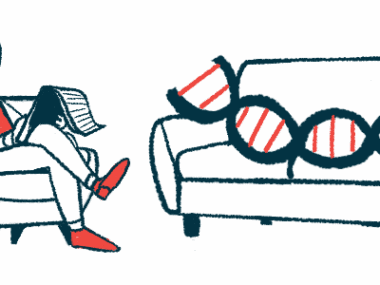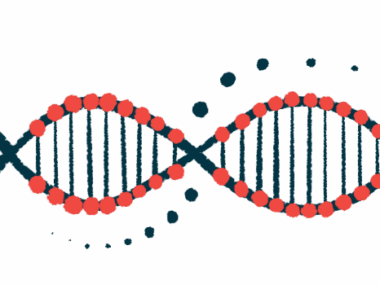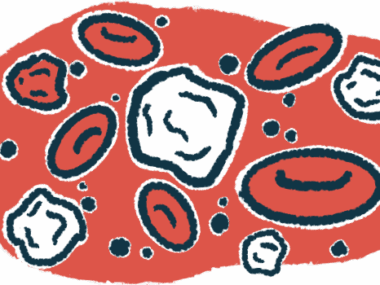3 types of molecules found to boost collagen levels in RDEB cells
They enabled production of full-length C7 protein or increased its mRNA
Written by |

Three types of molecules were found to support the production of collagen VII (C7) in patient-derived cell models of recessive dystrophic epidermolysis bullosa (RDEB), according to a recent study.
These compounds acted in RDEB caused by premature termination codon (PTC) mutations that produce a shorter, non-functional version of C7, which is the missing or faulty protein in patients. They either enabled the production of the full-length protein or increased the levels of C7 messenger RNA (mRNA), a temporary molecule needed for protein production.
“These results offer an opportunity to explore novel systemic [body-wide] strategies for the treatment of RDEB that could complement topical therapies to address the remaining unmet needs of patients,” researchers wrote. However, more studies are needed to assess whether C7 whose production was induced or increased is fully functional, they noted.
The study, “Identification of novel small molecule-based strategies of COL7A1 upregulation and readthrough activity for the treatment of recessive dystrophic epidermolysis bullosa,” was published in Scientific Reports.
DEB is caused by mutations in the COL7A1 gene, which encodes a portion of C7, a protein that connects skin layers. When this protein is faulty or missing, skin connections are fragile, leading to symptoms such as blisters and scar tissue formation. The disease may also affect other body parts, such as the mouth, digestive tract, eyes, and kidneys.
PTC mutations estimated to be present in 15%-20% of RDEB patients
In RDEB, patients must inherit two copies of disease-causing mutations to develop the disease. PTC mutations are estimated to be present in 15%-20% of RDEB patients.
Gentamicin, an antibiotic, has shown efficacy in RDEB caused by PTC nonsense mutations, but it has not been approved for use in patients due to its potential toxicity. Last year, the gene therapy gel Vyjuvek (beremagene geperpavec) was the first therapy to be granted U.S. approval for DEB to treat wounds. However, “there is still a strong need to address the systemic symptoms affecting RDEB patients,” the researchers wrote.
To identify small molecules that could restore the expression of full-length, functional C7, a team of researchers in Spain generated two cell lines from patient-derived keratinocytes, the main type of cells present in the outer skin layer (epidermis), with different PTC mutations.
Then, using these cells, the scientists tested the effects of 8,273 small molecules and 20,160 microbial extracts in restoring the levels of C7. Three chemical series of candidates were identified, representing novel small molecule-based potential therapies.
Two of the series, represented by compound 7 and chuangxinmycin (an antibiotic identified in the microbial extracts), could read through PTC mutations and enabled production of the full-length protein. The third, represented by compound 1, increased levels of a shortened C7 mRNA.
Compounds 1 and 7 were derived from the small molecules library aimed at identifying inhibitors of kinases, which are enzymes that regulate the activity of other proteins, and adenosine receptor blockers, molecules that can bind to adenosine receptors.
Compound 1 could increase C7 levels more when combined with gentamicin
Results further showed compound 1 could have a combined effect with gentamicin, which has readthrough properties, meaning that when used together, they could increase C7 levels more than when used alone.
“Upregulation of COL7A1 mRNA could have the potential to enhance the efficacy of other RDEB therapies and increase the basal readthrough levels seen in some RDEB patients,” the researchers noted.
When looking into targeted molecular pathways, the selected compounds were all shown to reduce inflammation. For instance, compound 1 inhibited the JAK/STAT cellular pathway, “a main hallmark of RDEB lesions,” the scientists wrote. As for compound 7, it modulated genes related to producing proteins.
The team noted that chuangxinmycin was “discovered more than 45 years ago” and “attracted the interest of medicinal chemists in the antibiotic-resistant bacteria arena.” No readthrough activity had been reported for this compound, they added.
Importantly, the distinct cellular processes associated with the identified molecules are all different from the effects of gentamicin, which targeted genes related to the response to misformed proteins.
Overall, this study suggests the new molecules could lead to the production of functional C7. “In any case, the chemical series that we have identified represent a solid starting point for future work aimed at demonstrating full functionality of the upregulated C7,” the researchers wrote.







